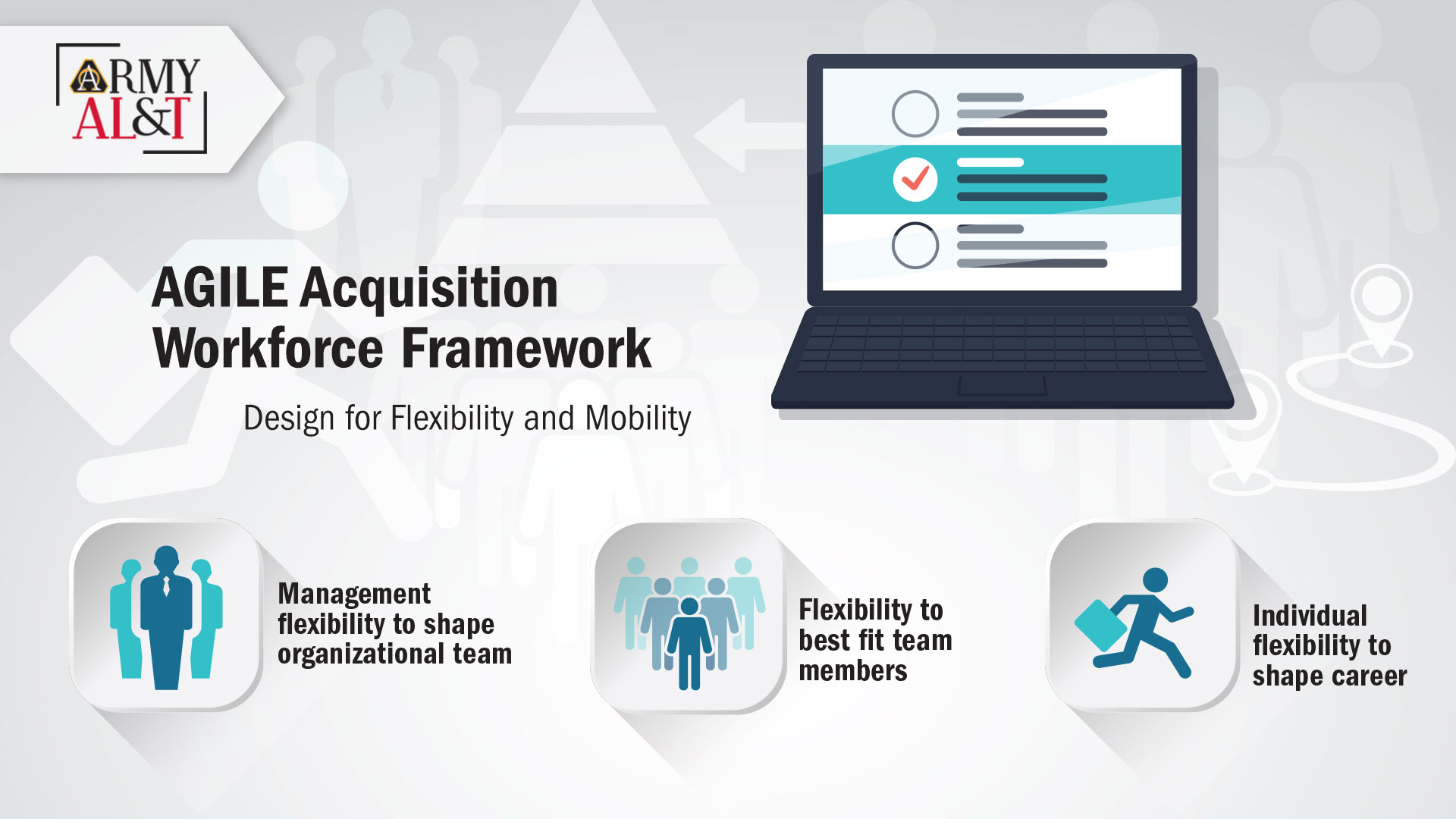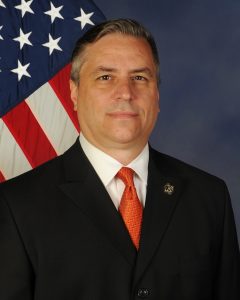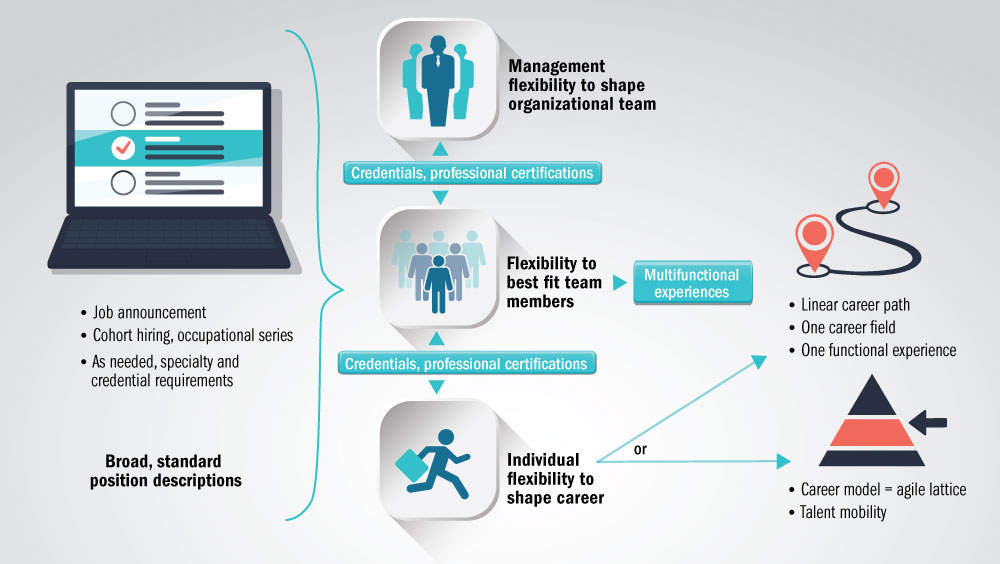
FROM THE DIRECTOR OF
ACQUISITION CAREER MANAGEMENT
CRAIG A. SPISAK
Modernizing the Army means modernizing acquisition.

Craig A. Spisak Director, U.S. Army Acquisition Support Center and Director, Acquisition Career Management
Significant change is coming to the defense acquisition workforce as we shift from an industrial-age to a more digital-age focus. Change is most difficult when people do not understand what they stand to gain from it.
The precise shape of the change to come has not yet been decided. The goal is a modernized framework for the Army Acquisition Workforce that empowers acquisition leaders and the workforce to become vastly flexible, agile and mobile. Organizations will need to operationalize agile acquisition at both the organization level and, for employees, at the tactical level. The most important benefit to the workforce of the coming changes is the shift from a one-size-fits-all system of training and certification toward a system that that can be tailored to varied performance needs across jobs or assignments.
MODIFIED TRAINING AND EDUCATION
The existing construct of the defense acquisition workforce will evolve in multiple ways. It is likely that some of the current 14 acquisition career fields (13 in the Army) will be discontinued. The Level I, II and III certification process of the Defense Acquisition Workforce Improvement Act (DAWIA) will likely undergo significant modification. Streamlined universal training will be completed early in an employee’s career, to be followed by on-demand and job-specific training and credentialing as needed, as well as careerlong learning and development with easily accessible refresher training. The idea will be to leverage high-impact training and development that supports lifelong learning.
The Army functional community will be key in developing competencies associated with apprentice, journeyman and expert levels for identified positions. Supervisors, as well as other leaders within commands, will be central to identifying which on-demand, job-specific training and credentialing will be needed for specific acquisition members within their ranks.
What we’re trying to create is a more agile, less boundary-laden acquisition workforce. Our talent management and career development processes need to change much more rapidly with the times, and be more creative and unique than they have in the past. As we move away from one size fits all, training and development need to be creatively applied to the individual to ensure relevance to current needs.
Acquisition is a complicated profession. We’re trying to solve complex problems. In 1985, the Packard Commission and a DOD review found that the acquisition workforce was undertrained and inexperienced. DAWIA was enacted in 1990 to establish education and training standards for the defense acquisition workforce. Having built a strong foundation, it’s now time for an extensive upgrade. Today’s environment requires acquisition professionals to perform duties that cut across multiple acquisition career fields.

A new, agile framework for the Army Acquisition Workforce promises much greater flexibility and mobility at all levels of an organization, from hiring throughout workforce members’ careers. (Graphic by U.S. Army Acquisition Support Center)
FOCUS ON SUPERVISORS
Career management and career development are very personal. Everybody in the Army Acquisition Workforce has an individual development plan, developed in concert by an employee and their supervisor to determine not only what needs to be done to succeed at today’s job, but also what the employee needs to do over the next three to five years to prepare for success at the next level.
As we move toward more decentralized career management, supervisors will be key to tracking and managing employees. Supervisors will have an even greater responsibility to identify what each of their employees needs—what training, which specific skills and credentials—in order to be successful.
While we have given a lot of opportunities to the individual employee, we have also made a tremendous effort at making supervisors as good at their craft as we possibly can. Those efforts will pay off for us now; we have to have a network of committed and dedicated supervisors who understand their roles and responsibilities. It will be up to supervisors to identify the “point-of-need” competency requirements when developing a team to manage a program. Do team members need new learning or other training, for example, to remain current in their skill sets and knowledge?
We’re obviously asking a lot of our supervisors, which means our selection of who becomes a supervisor becomes even more important. It’s fairly straightforward to look at a potential supervisor’s set of experiences and see if they’ve had the right kinds of jobs to be technically competent. But determining whether they’re going to be a good leader of people is much more difficult.
That’s why many of our top programs use the Senior Rater Potential Evaluation (SRPE), which measures not performance, but potential. Of vital importance to anyone who wants to be a program manager in the civilian acquisition workforce, the SRPE is a tool allowing a selection board to look at a historical set of evaluations of an employee’s potential. It gives the board insight into an individual’s strengths and their potential to perform in a leadership capacity.
What we ask of our supervisors is only going to increase. To build that pipeline of future supervisors and provide the opportunity for potential supervisors to perform at higher levels, organizations can offer short-term experience working at a higher level or in rotational assignments, which provide an opportunity to demonstrate competence and capacity to perform in a new area.
Giving someone a rotational opportunity that’s relatively low risk enables them to do what you’d be asking them to do if you were to hire or promote them. And you get the chance to see them in action. You get to see them apply their skill sets and develop a degree of confidence that they’re ready for the next step.
The Army Director for Acquisition Career Management Office offers advanced leadership development courses like the Acquisition Leadership Challenge Program, the Defense Acquisition University – Senior Service College Fellowship, the Defense Civilian Emerging Leader Program, Inspiring and Developing Excellence in Acquisition Leaders, Senior Enterprise Talent Management/Enterprise Talent Management, the Emerging Enterprise Leader program and the Professional Development Series offered by the The Army Acquisition School.
CONCLUSION
Since DAWIA’s inception 30 years ago, the Army has spent a lot of money to create a highly trained, skilled and talented workforce. That investment has paid off. But maintaining a static position will not allow us to compete on a global scale in today’s environment. We are in a very complex world with adversaries that aren’t playing by the same rules we do. If we are to provide the Army and our Soldiers the greatest capabilities possible, ones that exceed those of our adversaries, we have to invest in the future. We cannot remain static, because our adversaries aren’t remaining static.
The talent that we have is the critical piece that allows us to be successful, so we spend a lot of time and effort to understand to the best of our ability the data associated with what we know and what we don’t know, and we use that data to make smart decisions to create a better future for our acquisition workforce.
This article is published in the Spring 2020 issue of Army AL&T magazine.
Subscribe to Army AL&T News – the premier online news source for the Army Acquisition Workforce. ![]() Subscribe
Subscribe


